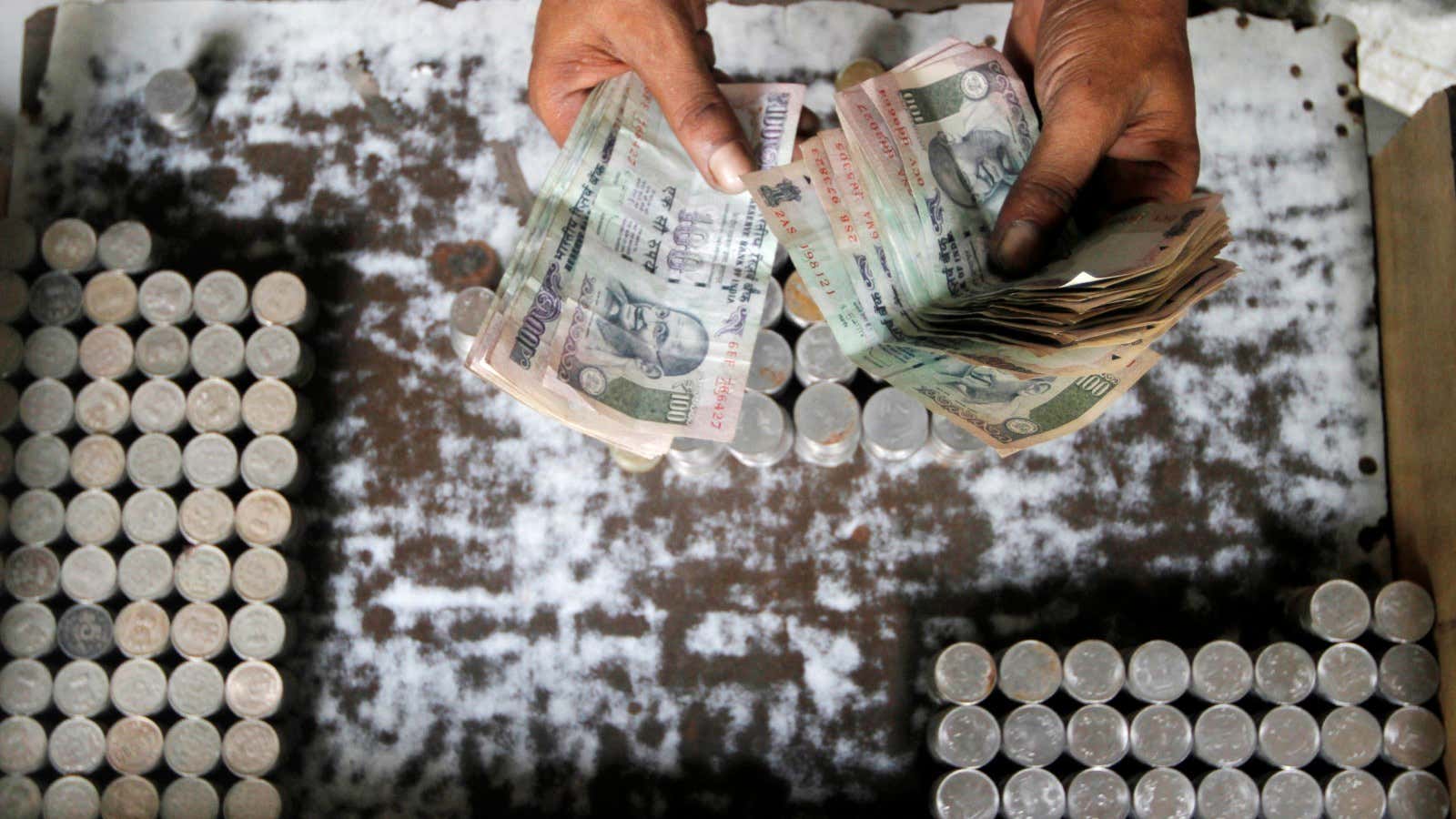It’s the season of populism and largesse in India as the 17th general election approaches. The latest pre-poll promise is a universal basic income (UBI).
Rahul Gandhi, the leader of the country’s largest opposition party, the Indian National Congress (INC), has announced that he will ensure a minimum income for India’s poor if his party is voted to power. “We have decided that every poor person in India would be guaranteed a minimum income after the Congress forms the government in 2019,” Gandhi, the told farmers at a rally in the central state of Chhattisgarh on Jan. 28.
It is widely believed in political circles that Gandhi’s announcement was meant to steal the prime minister Narendra Modi government’s thunder as it prepares to present the final budget of its tenure on Feb. 01. The budget may announce populist sops for farmers, similar to the UBI.
The concept of a minimum assured income is not new. The erstwhile Planning Commission of India had worked on it in the early 1960s. India is also not the first country to come up with this radical experiment. Several economies including the US, Canada, Brazil, Kenya, and Finland have been trying it in some form or the other.
But the jury is still out on the need and tenability of such a scheme.
Is it feasible?
The Congress party’s UBI plan is likely to include cash transfers to poor households across the country. There will reportedly also be a fixed amount that will be identified as the minimum income level and the benefits will depend on the shortfall.
Soon after Gandhi’s announcement, Gopal Krishna Agarwal, a spokesperson of the ruling Bharatiya Janata Party (BJP) party, lashed out against the idea. The government had looked at the issue of a basic income in 2014 but realised that even if all subsidies were eliminated, it would provide only enough funds to pay Rs6,000 ($84) per family per month which will not be enough, said Agarwal.
The debate had also been raised earlier when the economic survey of 2016-17 had broached the subject of a UBI. “…(UBI is more feasible) in a country like India, where it can be pegged at relatively low levels of income but still yield immense welfare gains,” the survey said.
That still leaves the moot question—how much money is required to foot this bill?
Kinjal Sampat and Vivek Mishra, researchers at the New Delhi-based Centre for Equity Studies, had tried to estimate the cost to the exchequer in a column for the news portal The Wire in 2017.
As per their calculations, the total intended expenditure of the central government in the financial year 2016-17 on various welfare schemes amounted to Rs3.62 lakh crore or about 2.4% of India’s GDP. Assuming the same amount is allocated for the UBI for the population that is below the poverty line, every person would be entitled to Rs12,669 a year (lower than the minimum wages legally granted). This excludes the cost undertaken to run the scheme which will, in turn, reduce the entitled amount.
Now, if this scheme were to be made quasi-universal in nature, and expanded to 75% of the population as suggested in the economic survey, then every person would be able to get only Rs4,000 yearly. Else, the expenditure outlay for the scheme will have to be increased four times to Rs11,50,00 crore which may take a toll on the government’s budget.
Roadblocks
Ironically, the policies laid down by the Modi government recently may help in a better implementation of the UBI.
“With Jan Dhan accounts and biometric validation, the government has put together part of the infrastructure to implement UBI,” Tarun Jain, assistant professor of economics and public policy at the Hyderabad-based Indian School of Business, told Quartz. “However, many challenges remain in the way of its successful implementation. For example, in health and education, the private sector is not well developed in many rural areas, so the government must provide these services.”
Critics argue its implementation may also be challenging given the
that exists in India. Then, basing UBI on the Aadhaar-based biometrics programme may also lead to exclusion as experienced
in the past.
“Given the amount of cash that will flow through the system under the UBI and the fungible nature of money, one could imagine a perverse equilibrium where UBI results in greater capture by corrupt actors,” the
pointed out, highlighting the perils of implementing the scheme.
The other argument against it is that it can even lead to problems in the labour market. However, at a time when India is grappling with an acute job crisis as unemployment has been rising at an alarming level, a variant of UBI may be a good idea, believes Mahesh Vyas, CEO of the Centre for Monitoring Indian Economy (CMIE).
“If we cannot ensure that we can generate enough jobs then the stress at the bottom of the pyramid is so high that it does warrant some sort of transfer of basic income as they can’t even have minimum wages work as there are no jobs,” he added.
